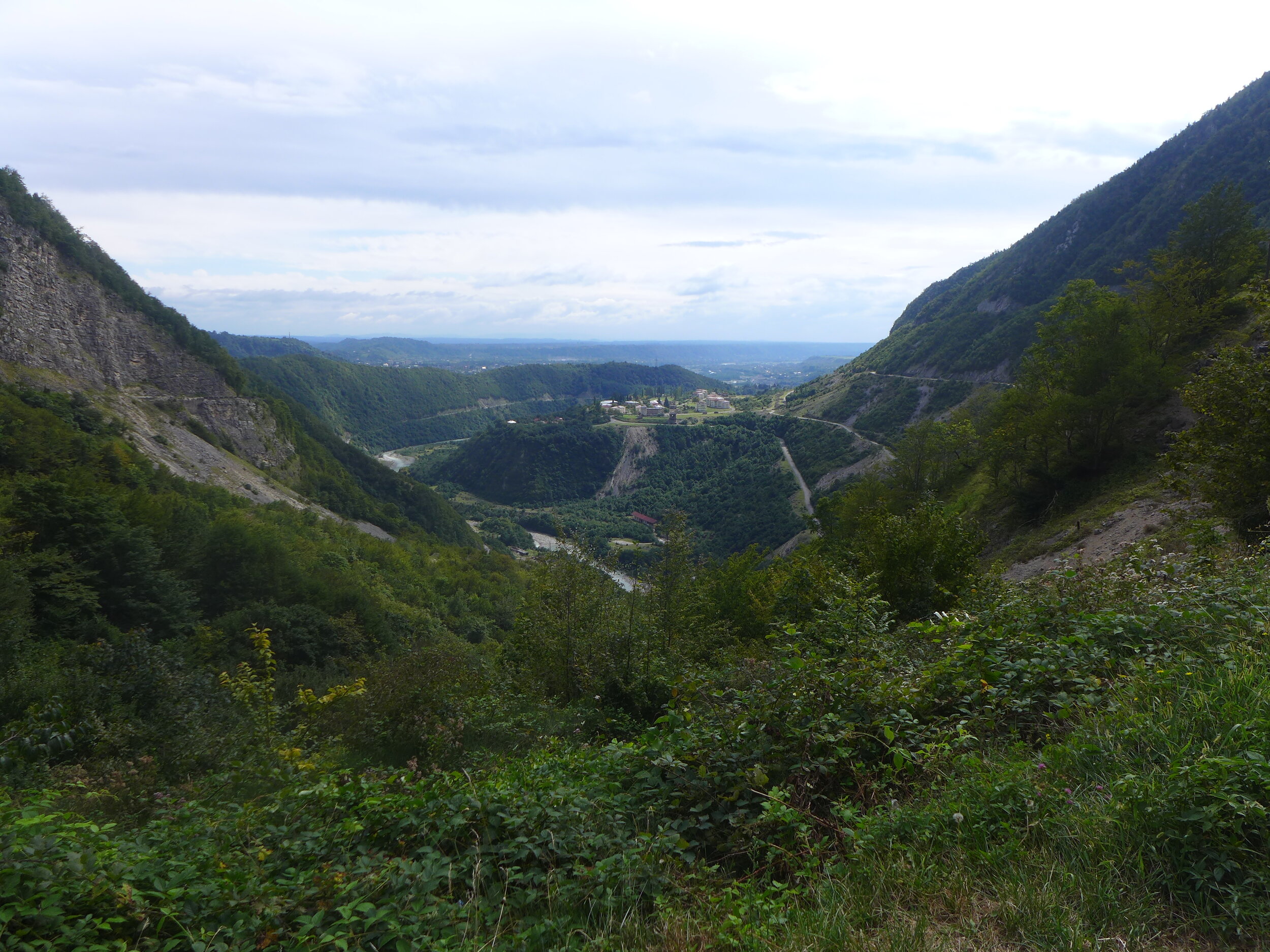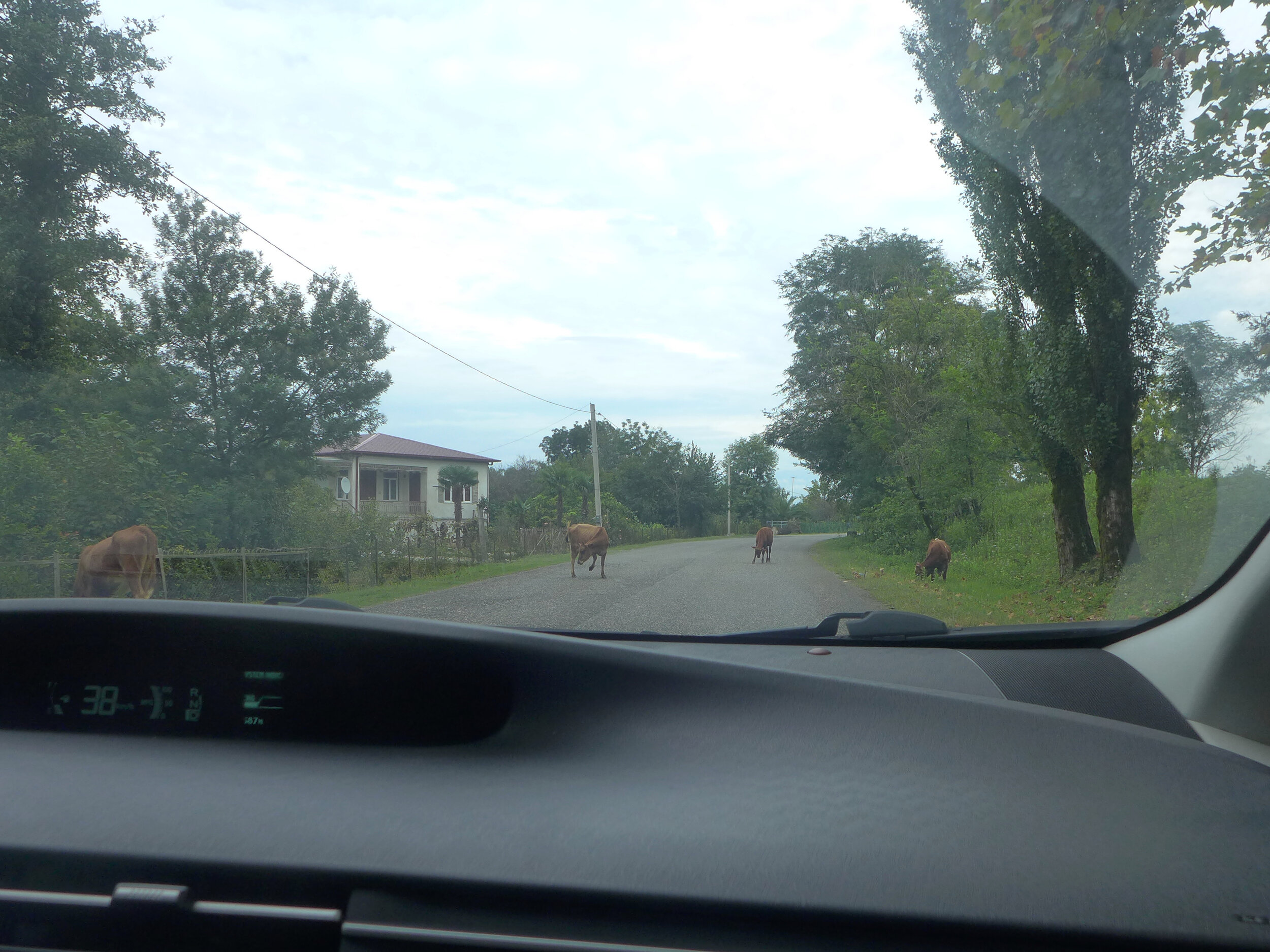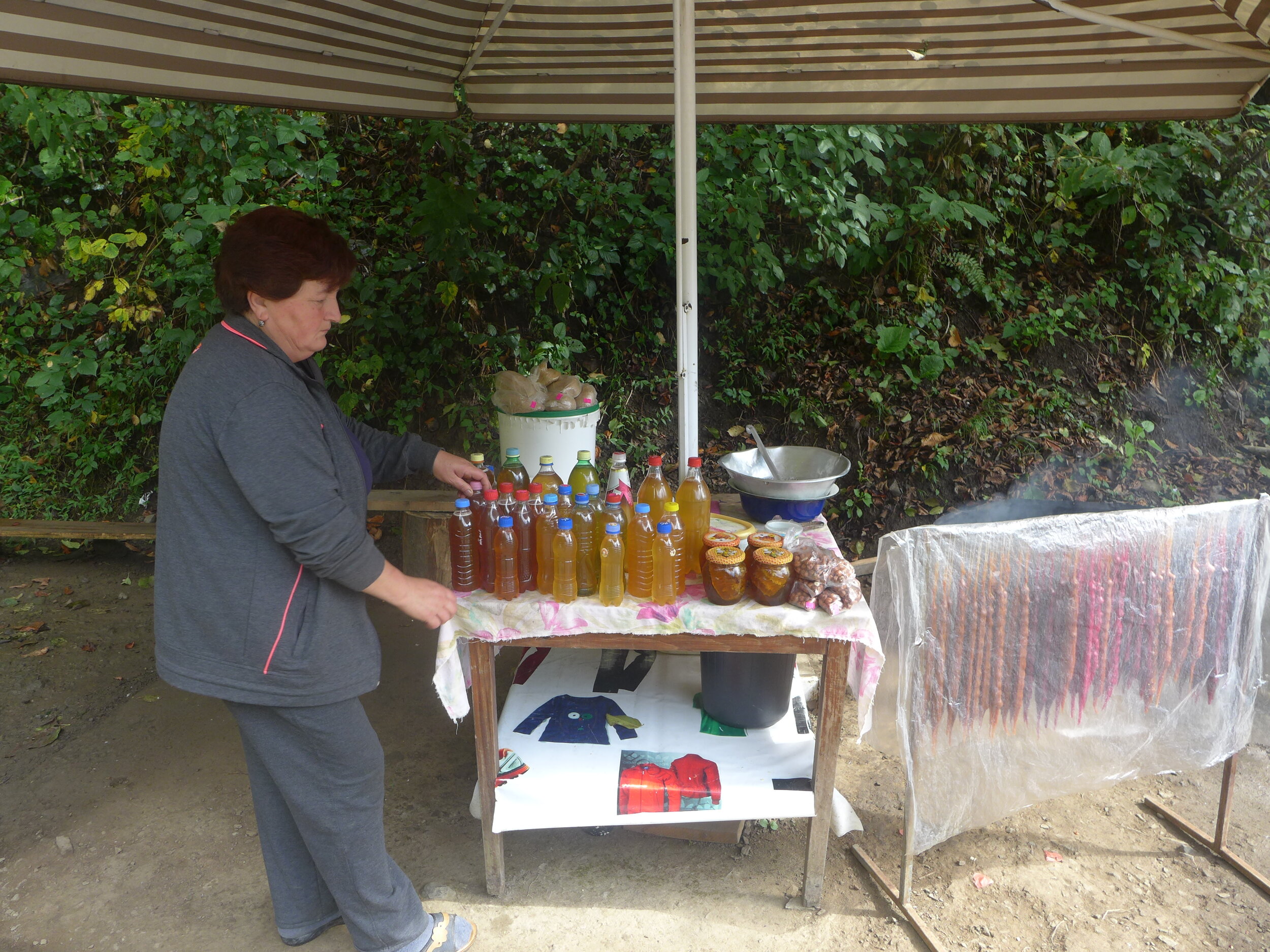Batumi To Mestia: A Breathtaking Drive Into The Caucasus Mountains
/The route from Georgia’s port town into the gorgeous Svaneti is one hell of a drive
Driving in Georgia
Although Georgia is a small country - roughly the same size as Ireland - it is full of mountain terrain that makes car journeys long and laborious. That’s why the drive from Batumi on the Black Sea to Mestia in the mountains is a good six hours long. But if you’ve got a good driver - like my tour guide David - who can negotiate those tricksy roads, then I guaranteed you that the drive in itself is an adventure.
After I checked out of my Batumi guesthouse, David collected me in his car. Before long, we’d left the port town behind and were out in the open Georgian country.
Georgian driving has a bit of a reputation: you hear stories of tourists leaving their taxis shaking with fear. (Including myself, when my cab driver in Tbilisi took both hands off the wheel on a highway to get a CD from the glovebox. That’s a whole other story.) Georgian drivers trust in the power of the crosses swinging from their windscreen mirrors and go along narrow those mountain roads at terrifying speeds. But, as David explained, things had improved in recent times since the government had covered the country in speed cameras. We passed a few police cars parked in lay-bys, where officers held speed guns.
Actually, the biggest challenge on Georgians seems to be livestock. Pigs, sheep, the odd horse - but mostly cattle, either drifting along in herds or lying blissfully on the asphalt. And these are cows that are completely unfazed by oncoming cars. You move for them: they don’t move for you.
‘What happens at night, when it’s dark?’ I asked David, as he drove around a pair of cows with barely an inch of space to spare. ‘Do people sometimes hit them?’
‘Sure,’ said David. ‘But it is okay for the driver. The farmers, it is their responsibility to pay for the damage the cow does to the car.’
We drove through the rolling flatlands that occupy the centre of Georgia, passing by houses with huge acreages filled with orchards and vineyards. In the hot sun, it might have looked Mediterranean, if it weren’t for the gas pipes on stilts that ran parallel to the houses. (A common sight in former Soviet countries, I’m told. I suppose it’s much easier and cheaper than laying them underground.) There were just as many buildings half-destroyed or in total disrepair as there were inhabited and functioning. I saw concrete buildings with mosaic friezes half-covered in creepers: abandoned, forgotten, subsumed into nature.
Dadiani’s Palace
We stopped at the Dadiani’s Palace. This is a grandiose nineteenth-century building that was once the seat of the Dadianis, a ruling dynasty in the Mingrelian region, but is now a museum space filled with things like crystal, china, religious icons and works of art. There wasn’t much to see, but I liked the paintings of cossacks dashing on horses through the mountains, an entry is just 2 lari (50p approx). In the grounds, a wedding party were having their pictures taken. I saw lots of newlyweds being photographed during my time in the Caucasus.
Lunch in Kutaisi
We ate lunch in Kutaisi, Georgian’s second-largest city: a humdrum-looking place that’s generally overlooked by tourists. I got to try khinkali, the Georgian dumplings filled with meat, mushrooms or cheese. These are very, very good: the sort of thing that will warm you on a cold day, or help you through a hangover. There’s no standing on ceremony with khinkali: you use your hands to pick them up, bite a hole, slurp out the hot, salty broth, and gobble up everything except the chewy little nibs.
READ NEXT: Trabzon: Things To Do In A Turkish Seaside Town
The road to the Svaneti
After lunch, we continued north. Suddenly, the Caucasus Mountains loomed before us, tall and craggy. Even though we entered into remote territory, there were still stray dogs everywhere, waiting in areas where people stopped to take scenic photos, hoping for treats. There were also lots of people selling honey in repurposed plastic bottles by the roadside. Beekeeping is big in Georgia, and indeed across the Caucasus. I bought some - it had a deep, delicious bitterness to it.
One highlight on the road to Mestia is the Enguri Dam, a vast hydroelectric dam that harnesses the forces of the Enguri, Georgia’s fastest river. David explained it had been built in the Khrushchev era; these days, half of its power goes to Georgia, and the other half to Abkhazia, the troubled de facto state at the western edge of the Caucasus Mountains.
To say that the Svanetian landscape is breathtaking is a serious understatement. We drove past towering mountains whose sides were carpeted in forestland; through vertigo-inducing gorges; past jagged slate cliffs.
What, I have to say, added to the drama was how bloody awful those roads were. It wasn’t just indifferent cows David had to deal with, but piles of fallen rock that could easily send a car screeching in the wrong direction. There were moments we turned along the mountainside roads, and I looked down to see nothing but hundreds of feet of open air. There were no barriers.
If you’re visiting Georgia and you plan to come this way in a rental car, you better bring your nerve with you. In fact, the route from Mestia to Ushguli is so dangerous that car-hire companies forbid tourists from taking their vehicles along there - they track them via GPS and threaten their customers with fines. This is the Svaneti: epic, gorgeous and utterly, utterly wild. MB










